My online Tableau Certified Data Analyst exam experience
Posted on: March 1, 2022
Post Category: Data
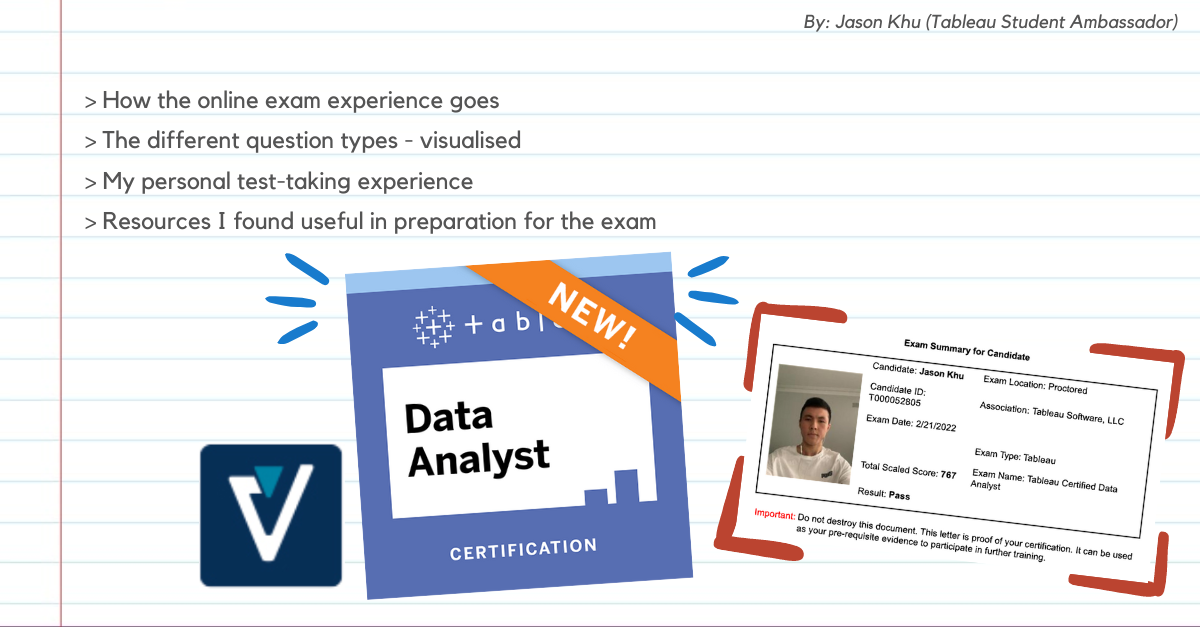
Earlier this year, Tableau decided to shake up their testing methods for their certification exams. And earlier this week, I had the pleasure of sitting the Tableau Certified Data Analyst exam. Or perhaps it was a displeasure – sitting a Tableau exam closed-book… really? All jokes aside though, the exam was genuinely a great opportunity for me to really solidify my understanding of Tableau concepts (without looking it up on Google), and it provided good exposure to Tableau Prep Builder and Tableau Online/Server.
Now, why the blog post? This blog post is for anyone who is preparing for the Tableau Certified Data Analyst exam. Why? To be honest, I wish I had more accessible insights about how the exam would go – what the different question types would actually be like, how much detail we need to know for each concept, etc. With all of the Tableau certification exams switching platforms at the start of the year, and all exams becoming closed-book, candidates don’t have much visibility of the process before sitting the exam AND they need to prepare a bit more strategically and extensively. Given how new the exam was, it was a bit of a struggle preparing with confidence and clarity. Usually, I try to get as many insights as possible about the exam, so I strategically visualise how I’d tackle the exam – and I imagine many people out there do this. SO if you DO happen to come across this post before you prepare for your exam, I hope you find this helpful.
Feel free to navigate to any section you may find more useful:
- How the online exam experience goes
- The different question types – visualised
- My personal test-taking experience
- Resources I found useful in preparation for the exam
How the online exam experience goes
A summary of the Tableau Data Analyst Certification exam experience can be found in the Tableau Certified Data Analyst exam guide (found on the Tableau website) and the instructions shared by PearsonVUE after you book an exam. But to share a bit more detail:
To register for your exam, you access the Tableau certifications portal and go to PearsonVUE to book a time for your exam. After this, you will get thorough information on the exam policy, what you need to prepare before sitting the exam. For an online exam, you can book the exam at any upcoming time but, if you do choose to cancel/reschedule your appointment, you will need to cancel at least 24 hours prior or reschedule at least 48 hours prior. After selecting a time, you will be required to checkout; after checking out, you can apply any vouchers that you have. You should be able to see the exam booked on your dashboard.
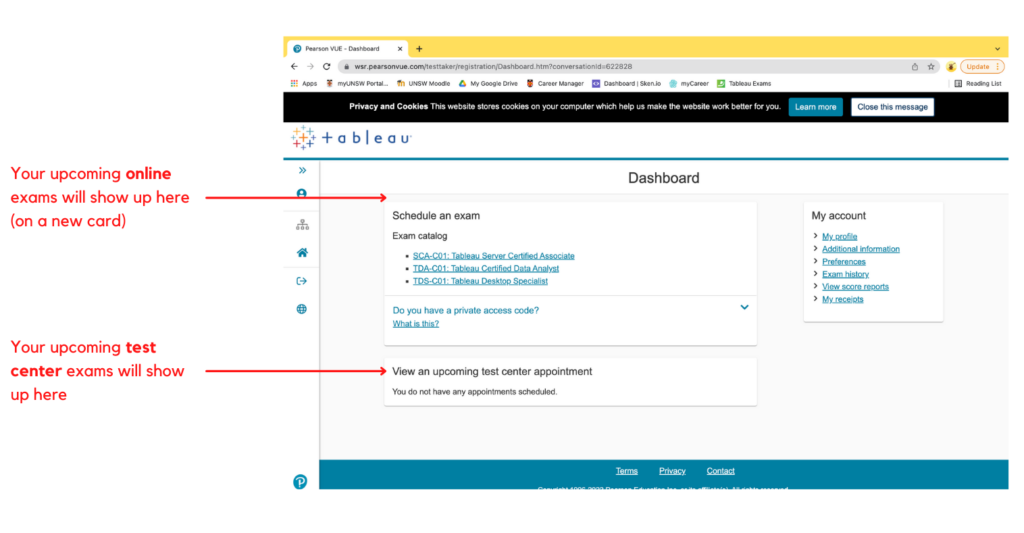
One of the things you will need to do before your test, aside from clearing your environment and preparing your form of photo ID, is to install the OnVUE application and run a system test – to test your microphone, speakers and webcam.
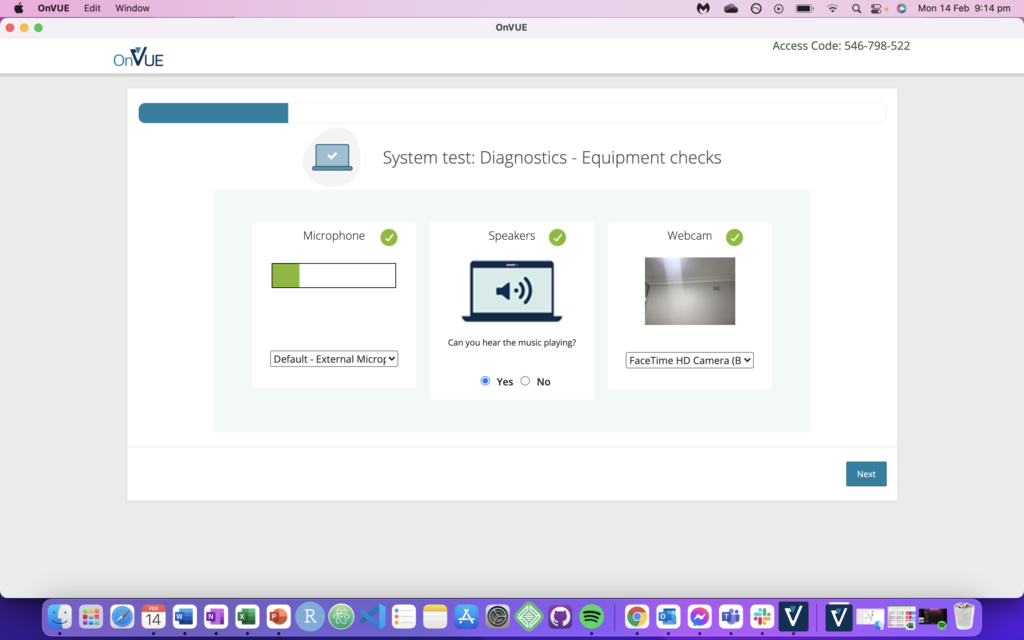
After you check-in up to 30 minutes before the start of your exam, you will do certain checks outlined below – of your ID, environment, etc. For the exam, you will not be allowed to use earphones and take any screenshots. You are also required to close all applications and refrain from using the internet. After this, you start the exam in the OnVUE app.
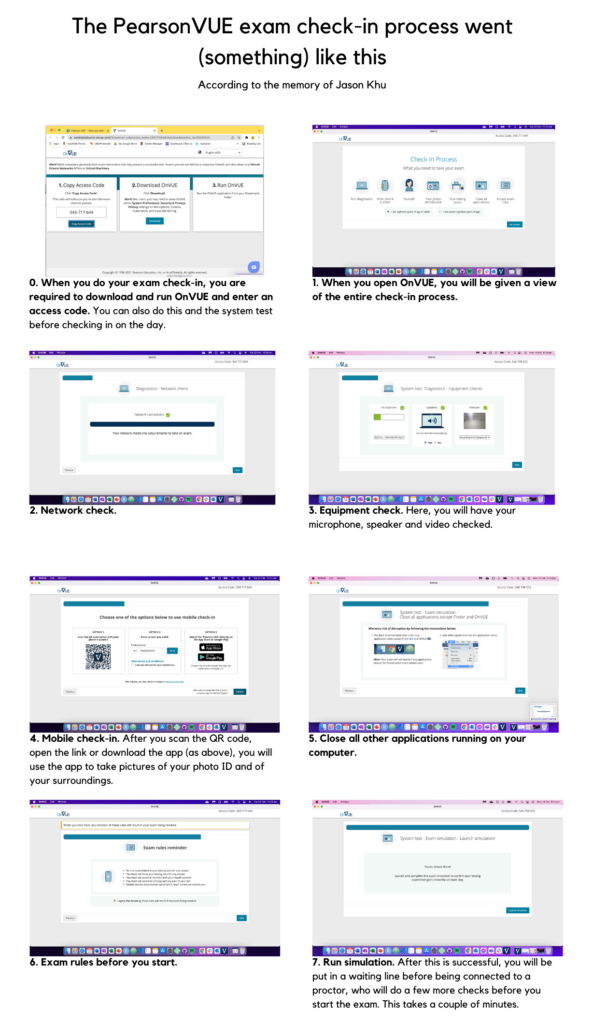
Now that’s the onboarding process… so what did the questions look like? The first section and third section were standard concept questions varying in question types. The second question involved a Windows virtual machine and a list of tasks you need to complete in a Tableau packaged workbook. For the second section, though, you CAN access help. I will cover this in a later section.
The different question types – visualised
Before I get into my personal experience… I’m not sure if it was just me, but I found it hard to wrap my head around the descriptions of each question type in the Tableau Certified Data Analyst exam guide. So for clarity, I decided to break the common ones down using a few drawn visuals (since I couldn’t take any screenshots during the exam)!
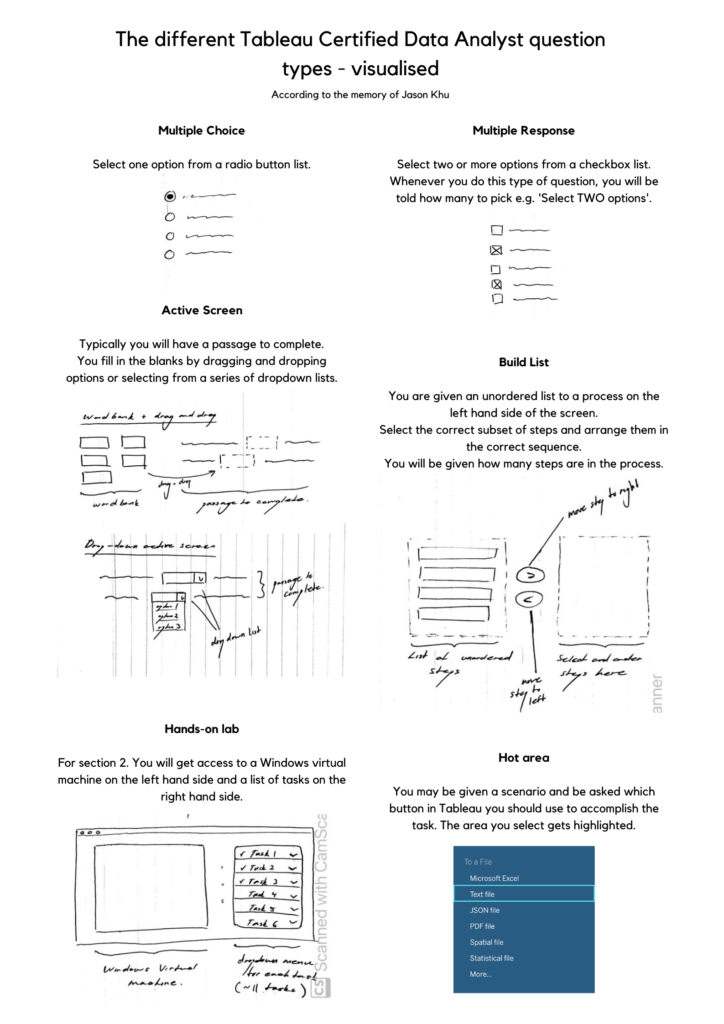
My personal test-taking experience
Overall, the test-taking experience went pretty smoothly. When you start the exam, you will be given a few minutes of reading time, where you’ll read through instructions on how to navigate the user interface and how to answer the questions. To be honest, there were about 10 slides worth of instructions with images, which was kind of overwhelming, but it was pretty easy to understand once you answer a few questions.
One of the instructions though, was that you had to view the entire question on-screen before putting in your answer and moving onto the next question. It was a little bit annoying seeing the warning dialog box pop up whenever I didn’t do this, BUT in hindsight it does help make sure that the examinee gets the chance to answer the question properly.
In the second section, you will be given access to a Windows virtual machine, which will be shown on the left-hand side of your screen, and you will be given a few tasks you will need to complete within given sheets in the given Tableau (Desktop) workbook – this is shown on the right-hand side of your screen. I personally this found this section the easiest to navigate as the tasks and sheets were arranged in order.
What people *might* find challenging with this exam is that you have three sections of the exam and you cannot go back to a previous section after you have completed it. BUT at least, within each section, you can flag a question and come back to it later. Moreover, the exam is pretty-much closed book. BUT during the second section, which is the lab, you do have access to a PDF version of Tableau Help – to simulate the Help you would normally get by using the Help menu in Tableau Desktop (so this section is somewhat open book). I wouldn’t rely on this too much though.
And with regards to what the questions asked, most questions were pretty conceptual and they didn’t require you to know the Tableau apps and different options available into too much (unnecessary) detail. Many questions will ask you how to accomplish a given result and you will need to select a single response (sometimes multiple). For example:
- For ‘How would I create the combined axis chart presented below?’, you might then select ‘Right-click the axis on the right hand side of the dual axis chart, select synchronise axis, uncheck show header’.
- ‘Which function should be used?’
- ‘What type of join should be used?’
Resources I found useful in preparation for the exam.
In preparation for the exam, I used Tableau’s e-learning suite in conjunction with other free/cheap study resources online. On Tableau’s e-learning suite, there is a Tableau Analyst Learning Path, where students learn how to connect to and transform data, create view and dashboards, explore and analyse data, and publish and manage content.
From my experience taking the exam, I would say at least 800 points of the exam were dedicated to concepts explored in the Analyst Learning Path, so just knowing that content in-and-out would be enough to pass the exam. In preparation for my exam, I prioritised studying the domains pertaining to Tableau Desktop and Tableau Prep Builder (which had a combined weighting of ~91%), using the Analyst path, and I was able to attain a score of 767.
If I could change my approach, or if I had more time to prepare for the exam, I would have spent a bit more time understanding the Tableau Online/Server concepts and invested more time looking over the content outline in the Exam Guide, and checked that I was familiar with each dot point.
Overall, here are the resources I found useful during my preparation:
- The Tableau Certified Data Analyst exam guide on Tableau’s website: contains basic introductory information about the certification, the exam structure and the types of questions and concepts that will pop up. You can find it here.
- The Tableau practice exams found on the learningtableau.com website: while the testing environment for these exams is not the same as the official certification exam, since the questions are only either single-response and multiple-response questions, the questions aligned with the scope of the actual exam pretty well and it helped me practice my knowledge in exam conditions. I have used this website since I have also used it to study for my Tableau Desktop Specialist exam earlier last year – so I figured it would be a reliable source. It is worth noting that the two exams (with solutions) cost ~21 AUD (~15 USD). There should also be free practice questions available on the website.
- The Tableau Certified Data Analyst study guide on the learningtableau.com website: this blog has a webpage linking the different dot points under each domain to a link on Tableau Help. Would recommend as a good (final) revision tool! You can find the study guide here.
- Tableau e-learning: the Tableau e-learning suite is a great resource to learn Tableau’s different products. It features many different learning paths for different Tableau users – one of these learning paths is the Analyst Learning Path, which will help you prepare for the Tableau Certified Analyst Exam. E-learning is accessible at $10 a month per user – after the free trail – and is free for University students. See the e-learning page here, and see the Tableau for Students page here.

About the author
Jason Khu is the creator of Data & Development Deep Dives and currently a Data Analyst at Quantium.